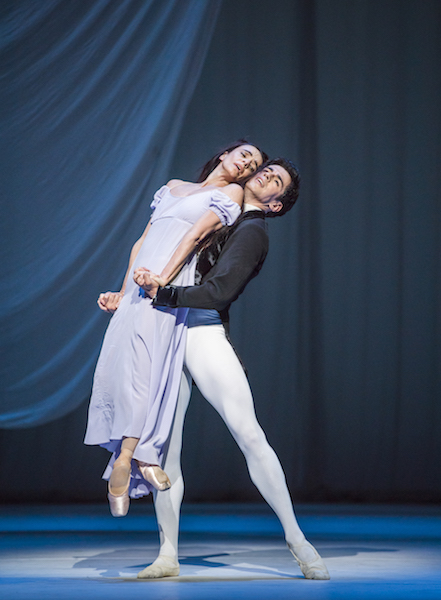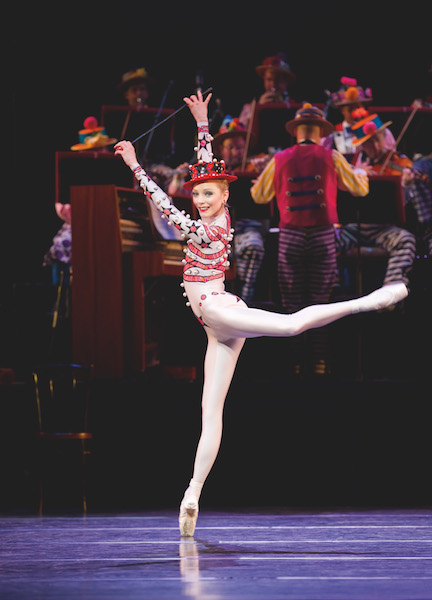One day someone will come up with an algorithm for the perfectly balanced triple bill. Until then ballet directors will have to make do with hit or miss. The Royal Ballet’s latest three-part offering would appear to tick the boxes: something old, something new-ish, and something just for fun. Yet while the evening can’t be faulted on the quality of performance, the effect is less than the sum of its parts.
The best comes first, with a first revival of Wayne McGregor’s Obsidian Tear, a work created two years ago for an all-male ensemble. As is often the case with this choreographer, nothing is simple, not even the title. Are we talking ripping tears or crying tears? Both, it turns out. The black, shiny, super-hard volcanic rock is a component of surgical blades, and shards of obsidian can be naturally tear-shaped. File that away for your next quiz night.
I had believed Esa-Pekka Salonen to be a conductor but he turns out to be an equally top-notch composer
But words are only the start of the puzzle. It’s also left to the audience to work out the anthropological landscape. Who or what are the nine men on stage? Are they friends or enemies, samurai or foot soldiers, ancient or modern, gay or straight? The costumes don’t offer many clues. The two lead guys are in sarong-style skirty things (main picture), while the others sport a mishmash of fashion faux pas including a shift dress, trackies, and a kind of bra top.
It’s the music that tells you this is serious. I had believed Esa-Pekka Salonen to be a conductor but he turns out to be an equally top-notch composer, continuing the Debussy-Takemitsu trajectory. A haunting piece for solo violin, Lachen verlernt (stunningly played by Vasko Vassilev) segues into a big, meaty and ultimately thrilling symphonic poem, Nyx, inspired by the Greek personification of darkness.
 McGregor’s response to its tonal drama looks like nothing he has done before. Gone is the snake-spined hyper-kineticism, in its place a gestural language that suggests something ancient. The movement is fuller and rounder, with flowing arms and a flowery coiling of hands. You wonder if the piece in its atavistic way is addressing gender issues. At one point two men engage in a pas de deux which presents the beefier and bigger dancer in a frankly feminine way, with supported arabesques and yearning lifts. The effect is startling, and surprisingly touching.
McGregor’s response to its tonal drama looks like nothing he has done before. Gone is the snake-spined hyper-kineticism, in its place a gestural language that suggests something ancient. The movement is fuller and rounder, with flowing arms and a flowery coiling of hands. You wonder if the piece in its atavistic way is addressing gender issues. At one point two men engage in a pas de deux which presents the beefier and bigger dancer in a frankly feminine way, with supported arabesques and yearning lifts. The effect is startling, and surprisingly touching.
When eventually six guys gang up on one of the skirted protagonists and throw him over a cliff, you see Obsidian Tear for what it is: a 21st century Rite of Spring, with maleness, not fecundity, as its focus.
The perfumed précis that is Marguerite and Armand looked sickly and pale alongside that one, despite its being neither of those things. Frederick Ashton made this one-acter in 1963 as a vehicle for the company’s surprise star pairing – the 43-year-old Margot Fonteyn and 24-year-old Soviet tearaway Rudolf Nureyev. Much fuss was made at the time over Fonteyn’s age: Ashton even inserted a faltering step which, though it overtly related to the failing health of the courtesan in Dumas’ story, was widely read as a comment on Fonteyn’s failing powers. How times change.
 Alessandra Ferri took the role on Saturday night, and she is about to turn 55. Of the five ballerinas who have been sanctioned to dance the work in London since the Sixties, she is the most Fonteyn-like in her lyricism. Hers is not a big performance – it’s fragile and vulnerable, a quiet tragedy. Partnered by the fine-limned Federico Bonelli (pictured above right with Ferri, image Tristram Kenton), hers is as near-perfect a performance as one could wish. Framed by kinder ballets, it could have been memorable.
Alessandra Ferri took the role on Saturday night, and she is about to turn 55. Of the five ballerinas who have been sanctioned to dance the work in London since the Sixties, she is the most Fonteyn-like in her lyricism. Hers is not a big performance – it’s fragile and vulnerable, a quiet tragedy. Partnered by the fine-limned Federico Bonelli (pictured above right with Ferri, image Tristram Kenton), hers is as near-perfect a performance as one could wish. Framed by kinder ballets, it could have been memorable.
But Elite Syncopations was clearly the audience choice of the night – and yes, it is fun, with its onstage ragtime band in silly hats, the dancers immaculate in their spray-on psychedelic Lycra. At times the stage looks like an explosion of M&Ms. Perhaps it’s sourpussery to find it all a bit dated, but I can’t think Kenneth MacMillan really intended it to last much beyond the Seventies (Sarah Lamb, pictured left by Johan Persson). Were he alive to revise it, I’d bet he’d make the women’s solos less kittenish, less pert. As he agreed in 1975, Elite could have gone on at the Palladium. Enough said.














Add comment